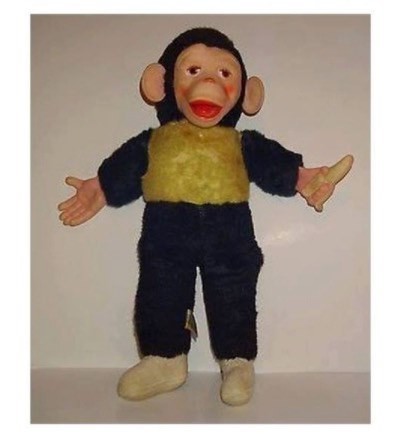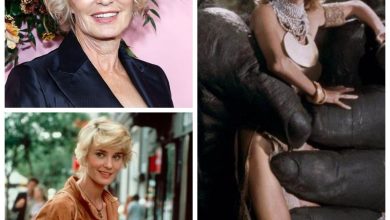
ADVERTISEMENT
A Nostalgic Look at Vintage Monkey Dolls: The Charm, Quirk, and Cultural Legacy
ADVERTISEMENT
Introduction
In the world of vintage toys, few items capture attention quite like the classic monkey doll. With its wide-eyed expression, quirky features, and often unusual clothing, this doll is both endearing and uncanny, evoking nostalgia for collectors and those who grew up during the mid-20th century. But why does this doll hold such a unique place in our hearts and memories? In this article, we’ll explore the origins of vintage monkey dolls, their cultural impact, and why they continue to be beloved among collectors.
The Origins of the Monkey Doll
The monkey doll first gained popularity during the 1950s and 1960s, a time when soft toys and novelty dolls were widely manufactured and sold in department stores across the U.S. and Europe. Many of these dolls were inspired by television shows, circus themes, and children’s fascination with animals. During this era, monkeys symbolized playfulness and curiosity, making them an ideal character for a child’s toy.
Various manufacturers, including American and European companies, produced different versions of the monkey doll. The materials used in these toys varied from plush fabrics to vinyl and rubber for facial features. This specific aesthetic—a combination of lifelike expressions with cartoonish features—became a hallmark of vintage dolls, creating a mix of realism and whimsy.
ADVERTISEMENT
The Unique Design and Appeal
What sets vintage monkey dolls apart is their unique and often unusual design. Unlike the plush, rounded animals commonly seen in toys today, these monkey dolls often had exaggerated expressions and features, with large, expressive eyes, open mouths, and distinct clothing styles. Their hands and feet were often designed to appear almost human-like, adding to their lifelike yet quirky charm.
The color scheme also played a big part in the monkey doll’s design. Many of these dolls had contrasting colors for their bodies and faces—like the doll in this photo with its yellow and black outfit. This bold color contrast made them visually striking and memorable.
These design choices were partly functional as well. With their wide arms and friendly expressions, monkey dolls were intended to be approachable and comforting for children. However, from today’s perspective, their exaggerated features give them a slightly uncanny appeal, making them both endearing and eerie at the same time—a quality that modern collectors find fascinating.
Monkey Dolls in Popular Culture
ADVERTISEMENT
During the mid-20th century, monkey dolls became popular as both toys and collectibles. Their appearance in media, especially television shows and advertisements, helped cement their place in popular culture. Shows like “The Ed Sullivan Show,” which frequently featured animal acts, as well as cartoons like “Curious George,” contributed to the monkey’s image as a playful, mischievous creature beloved by children.
This monkey doll aesthetic was also a staple in theme parks, fairs, and circuses, where monkey characters often represented fun, curiosity, and light-hearted mischief. The toy industry capitalized on this cultural image, creating toys that resonated with children’s and parents’ perceptions of monkeys as adorable troublemakers. Additionally, monkey dolls became favorite prizes at carnivals, further solidifying their presence in everyday American culture.
The Collector’s Appeal
Today, vintage monkey dolls are highly sought after by collectors who appreciate the charm and unique history behind these toys. For some, these dolls are a nostalgic reminder of their own childhoods; for others, they represent an era when toys were crafted with distinctive and often experimental designs.
Collectors value these dolls for several reasons:
ADVERTISEMENT
- Rarity: As with many vintage toys, finding monkey dolls in good condition is increasingly rare. The wear and tear from years of play make well-preserved dolls highly valuable.
- Unique Aesthetic: The slightly uncanny design of these monkey dolls is a major part of their appeal. They stand out in a collection and often become conversation pieces due to their unusual, sometimes whimsical expressions.
- Historical Value: Collectors who appreciate toys as historical artifacts see these dolls as representatives of mid-20th century design and culture. Each doll tells a story about the time period in which it was made.
- Pop Culture Symbolism: Vintage monkey dolls remind us of a simpler time in toy manufacturing, when toys were designed to be unique and memorable. They carry with them the nostalgia of vintage circus and carnival aesthetics, resonating with collectors who appreciate these old-time symbols.
The Modern Legacy of Monkey Dolls
Though modern toys have moved toward more realistic or stylized designs, the legacy of monkey dolls lives on. They’re frequently featured in vintage toy exhibitions, and some contemporary artists and designers take inspiration from their quirky appearance. Additionally, monkey dolls have a small but dedicated community of collectors who trade and showcase these dolls, keeping the memory of this unique toy alive.
In recent years, some toy companies have even revived the concept of monkey dolls, creating modern versions inspired by the original designs. These newer models incorporate retro elements like oversized eyes and expressive faces, while adding updated materials and design features for today’s audience. While not as popular as they once were, monkey dolls remain an enduring symbol of vintage toy design.
Conclusion
Vintage monkey dolls hold a special place in the world of toy collecting and nostalgia. Their distinct design, cultural significance, and quirky charm make them memorable artifacts of a bygone era. For those who grew up with them, they evoke fond memories of childhood, while for younger generations, they offer a fascinating glimpse into mid-20th century design and culture.
Whether as collectibles, decorative items, or simple nostalgic reminders, vintage monkey dolls continue to captivate people with their unique blend of whimsy and eccentricity. In a world where toys are often uniform and mass-produced, these quirky relics remind us of a time when toy-making was an art form, capturing the spirit of imagination, joy, and a bit of mystery that every child—and child-at-heart—can appreciate.




